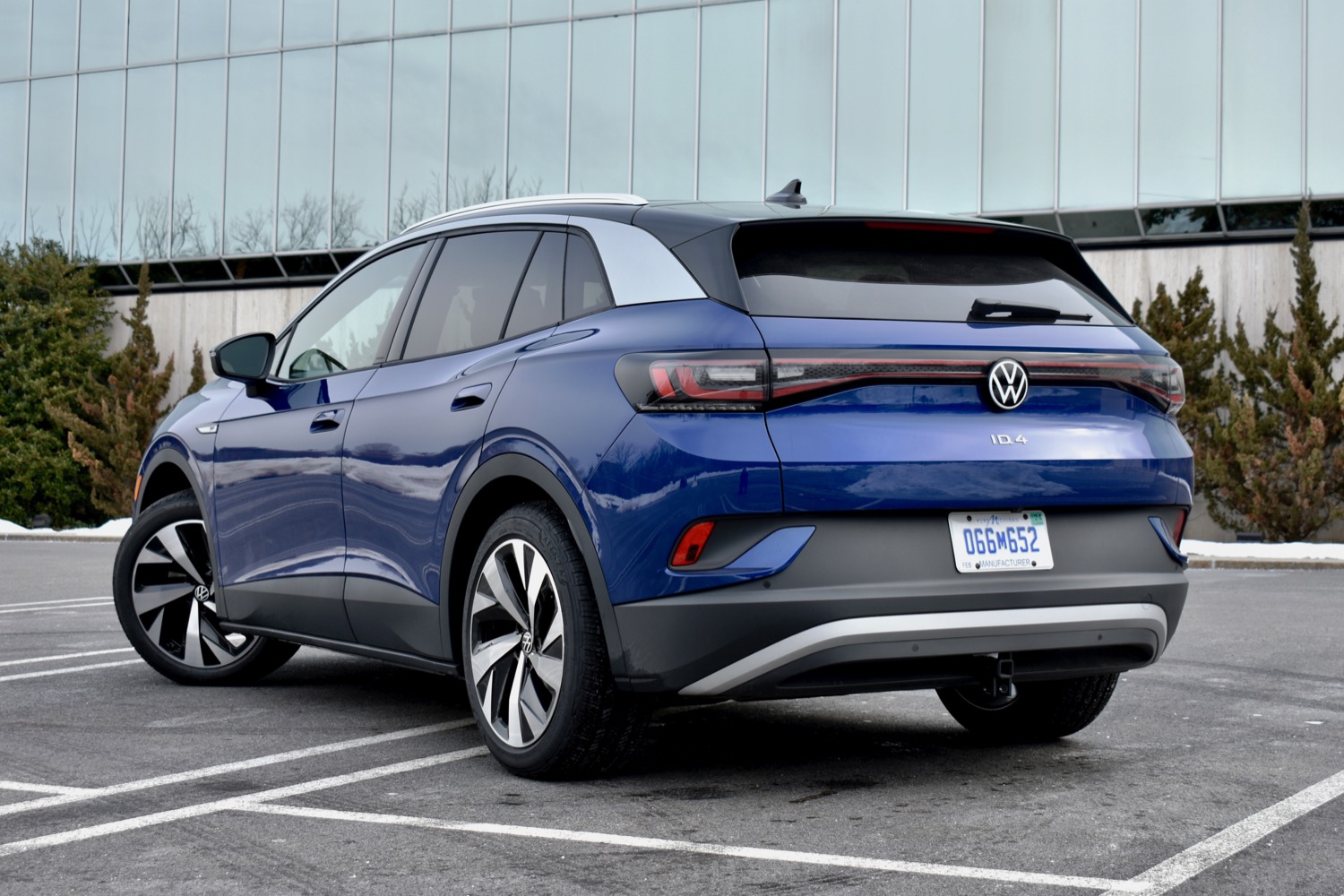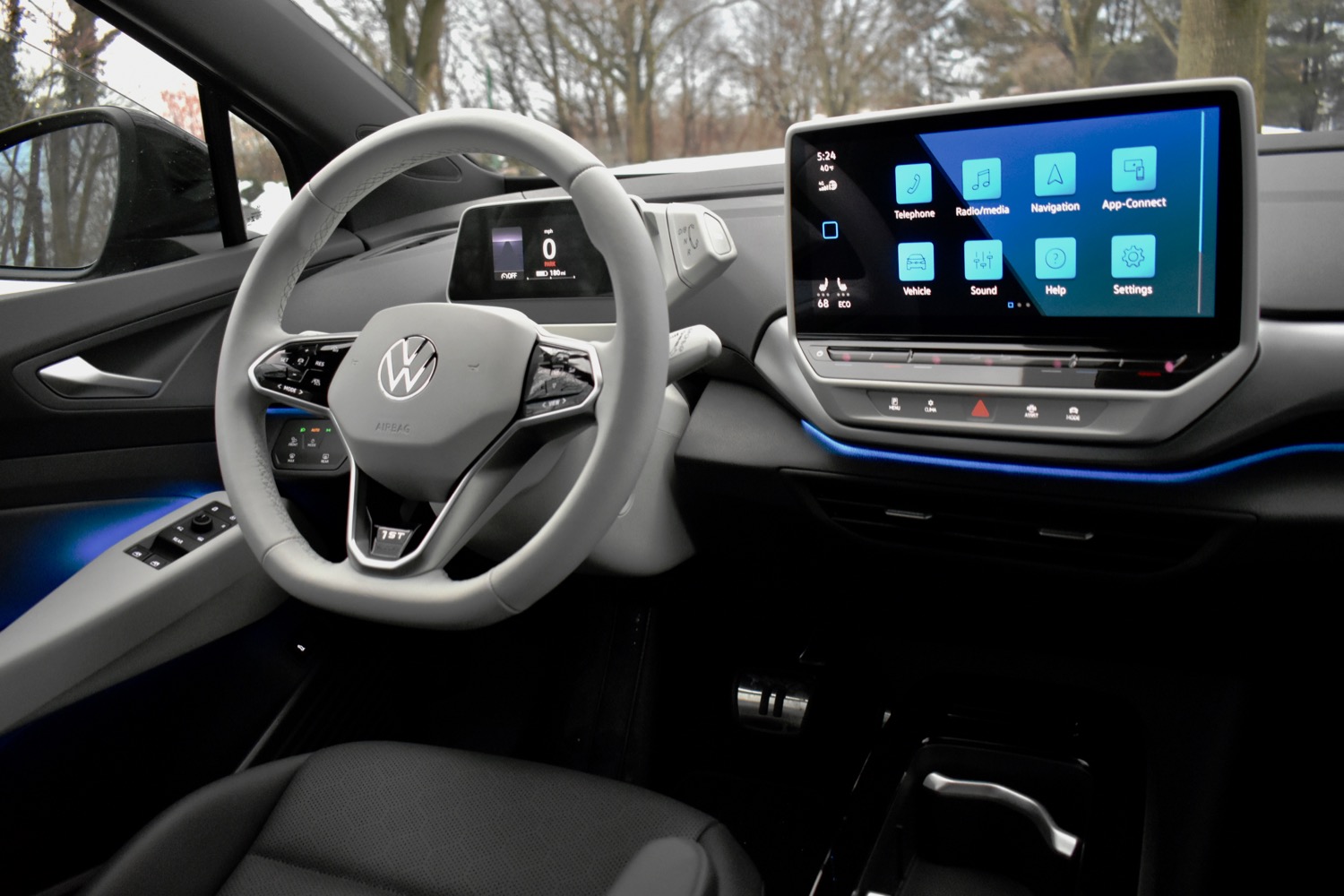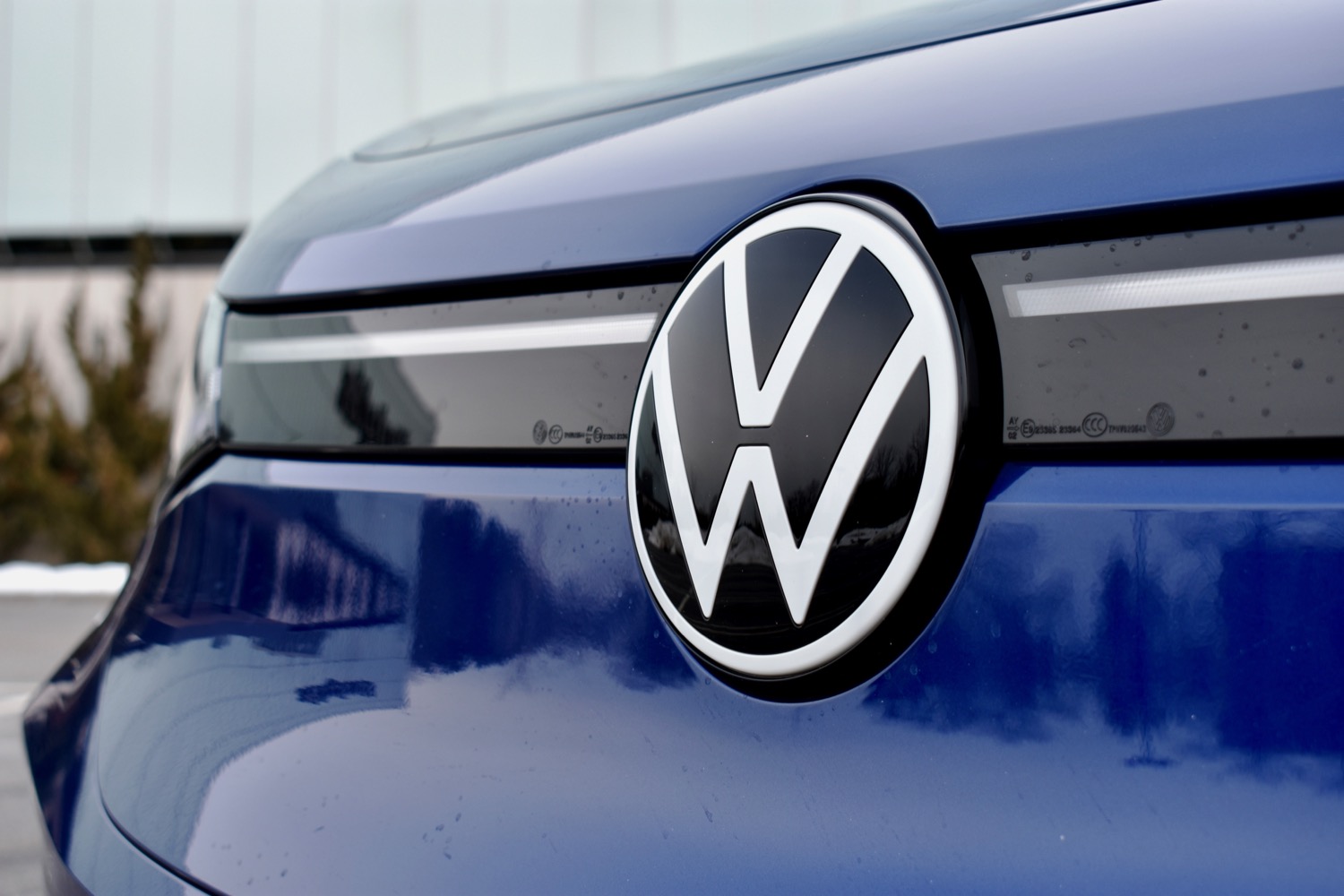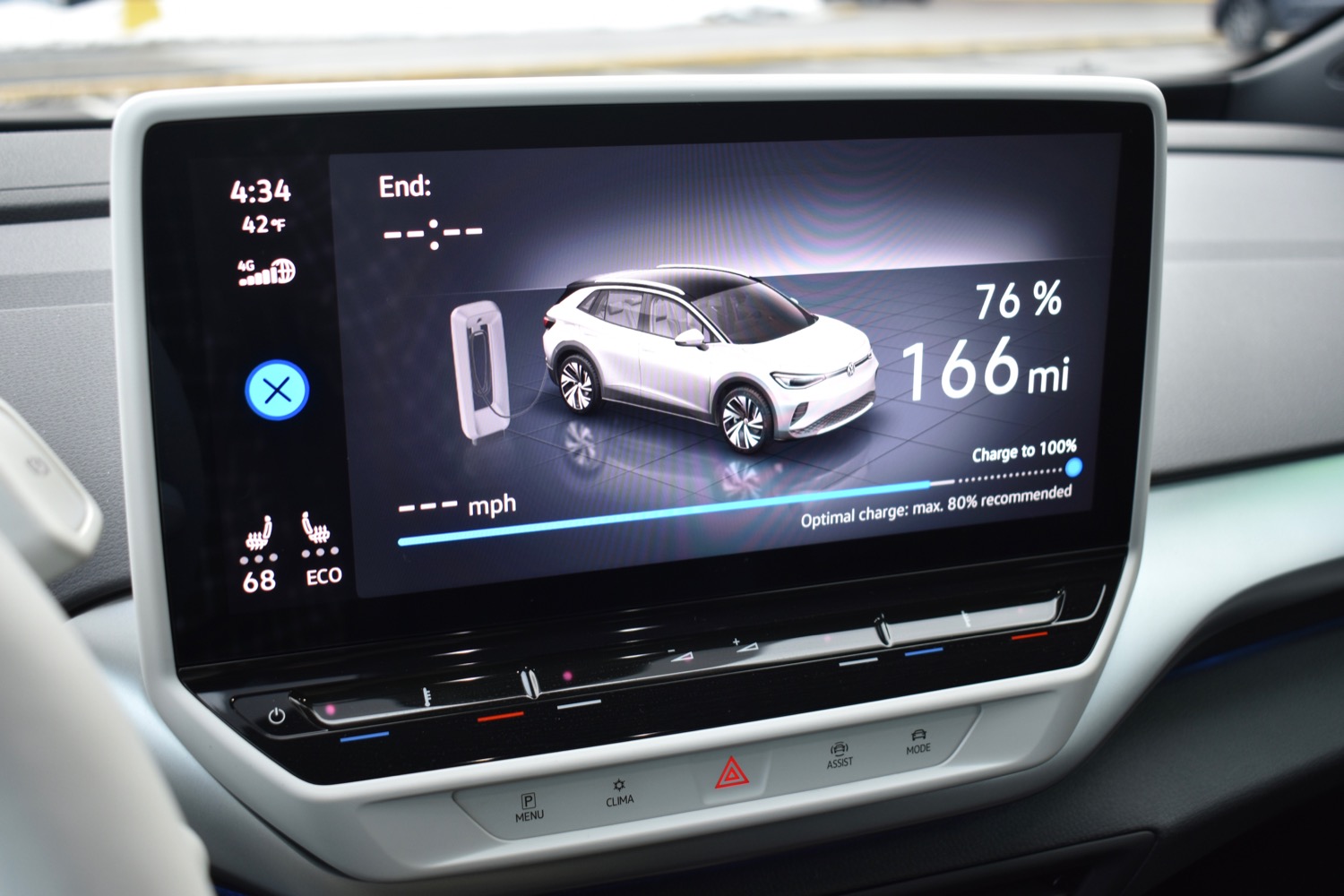The 2021 Volkswagen ID.4 isn’t the first affordable electric car, but VW believes it will be the one that finally gets the world to go electric.
That’s pretty ambitious, considering the ID.4 only exists because of the Volkswagen diesel scandal. When it was caught cheating on emissions tests, VW pivoted to EVs to save face, but this is much more than a PR effort. Volkswagen is throwing the full weight of its manufacturing infrastructure and dealership network behind EVs, and says the ID.4 will compete for sales with popular gasoline vehicles like the Honda CR-V and Toyota RAV4.
For now though, the ID.4 is most likely to be cross-shopped against similarly priced electric cars, such as the Hyundai Kona Electric, Kia Niro EV, Nissan Leaf, and the recently unveiled Chevrolet Bolt EUV. These cars all offer an acceptable amount of range at mainstream prices, but none has sparked (no pun intended) an EV revolution. Can VW do better?
To find out, we spent a few days with a 2021 Volkswagen ID.4 1st Edition, which carries a $45,190 base price. This model is already sold out, but it’s mechanically identical to the ID.4 Pro S, the high-end model of the regular lineup. The Pro S rings up at $46,190, while the base ID.4 Pro has a $41,190 base price. Keep in mind that, unlike some competitors, Volkswagen EVs still qualify for the full $7,500 federal tax credit.
Design and interior
Volkswagen calls the ID.4 an SUV that’s analogous to its gasoline-powered Tiguan, but the styling doesn’t make that apparent. While the ID.4 has some SUV-like design elements, such as plastic body cladding and a slightly raised ride height, it looks very similar to the European-market Volkswagen ID.3 hatchback.
The design is part of VW’s strategy to make electric cars more attractive. American buyers prefer SUVs over hatchbacks, so VW didn’t bother bringing the ID.3 here. The ID.4 also isn’t the only EV that blurs the line between SUV and hatchback. You could say the same thing about the Chevy Bolt EUV or Hyundai Kona Electric, as well as the more high-end Ford Mustang Mach-E and Tesla Model Y. However, we’re not sure if buyers who want a true SUV will find the ID.4’s styling appealing.
The ID.4 is the first vehicle sold in the United States that is based on the Volkswagen Group MEB platform, a modular architecture for electric cars that also underpins the ID.3 and will also be used for several other upcoming models, VW has said. Using the formula pioneered by Tesla, MEB places the battery pack under the floor to maximize interior space. Unlike Tesla, VW didn’t include a “frunk” and instead opted to push the cabin further forward for even more passenger space.
The design is part of VW’s strategy to make electric cars more attractive.
Speaking of passenger space, The ID.4 can’t quite match the gasoline SUVs Volkswagen has named as competitors. Front and rear legroom is close to, but still behind the Toyota RAV4, and far behind the Honda CR-V. The VW has more front headroom than the Honda or Toyota, but less rear headroom. Compared to other electric cars, the ID.4 offers substantially more headroom, but legroom in both rows is merely average.
At 30.3 cubic feet with the rear seats in place, and 64.2 cubic feet with the seats folded, the ID.4 offers substantially more cargo space than other EVs in this price range, but much less than the gasoline CR-V and RAV4.
The interior design features the same minimalist theme as other recent Volkswagen models. The lower-level ID.4 Pro gets cloth upholstery, and even the ID.4 Pro S and 1st Edition models are only available with leatherette, rather than real leather, upholstery. At least you can upgrade to massaging front seats. Forward visibility was excellent, but rear visibility was hampered by thick pillars and a small back window. That’s not something you have to deal with in the CR-V or RAV4.
Tech, infotainment, and driver assist
The ID.4 comes standard with a 10.0-inch infotainment touchscreen and 5.3-inch digital instrument cluster. Wireless Apple CarPlay and Android Auto are standard as well, and you can upgrade to a 12.0-inch touchscreen.
Volkswagen also equipped the ID.4 with some features you don’t normally see in this price range, including a natural-language voice-recognition system, which responds to the prompt “Hello ID.” The car also features ID Light — a light strip at the base of the windshield designed to communicate messages to the driver. For example, it blinks when you lock or unlock the doors, changes color for different drive modes, and acts as an in-cabin turn signal in concert with the navigation system.
The touchscreen was excellent, with nice-looking graphics and intuitive menu layouts. Volkswagen even offers a choice of a smartphone-style home screen with icons or a split-screen view that’s more typical of in-car infotainment systems. We appreciated the voice-recognition system’s ability to comprehend straightforward commands like “turn the temperature up” or “turn on the heated steering wheel,” but it was slow to respond when prompted. ID.Light didn’t serve much of a purpose besides making the interior look like a rave.
The touchscreen was excellent, with nice-looking graphics and intuitive menu layouts.
When they’re not using voice recognition or the touchscreen, Volkswagen makes drivers rely on haptic touchpads, which we found difficult to use while driving. In many new cars, analog controls make up for a poorly designed touchscreen, but in the ID.4, it’s the other way around. Volkswagen tried too hard to make the interior feel futuristic. A more conventional design might not have had the same tech-savvy style, but it probably would have worked better.
Standard driver-assist features include forward collision warning, automatic emergency braking, blind spot monitoring, lane keep assist, park distance control, automatic high beams, and adaptive cruise control. Also standard are Travel Assist, which adds automated lane centering to the adaptive cruise control, and Emergency Assist, which can automatically bring the car to a stop if it detects that the driver is incapacitated.
Travel Assist is roughly comparable to the ProPilot Assist system available in the Nissan Leaf, but not as sophisticated as the Super Cruise system that will be offered on the 2022 Chevy Bolt EUV when it hits dealerships later this year. In the ID.4, VW’s system performed well, even compared to a gasoline VW Arteon with the same system. The ID.4 didn’t have as much trouble keeping itself centered in a lane as the Arteon, and also negotiated gentle highway curves smoothly — something other lane-centering systems often struggle with.
Driving experience
The standard powertrain consists of a single rear-mounted electric motor that produces 201 horsepower and 229 pound-feet of torque, and draws power from an 82-kilowatt-hour battery pack.
Two things distinguish the ID.4 from its rivals. The first is the Volkswagen’s rear-wheel drive layout. Its competitors (and most mainstream gasoline cars) are front-wheel drive. Driving enthusiasts prefer rear-wheel drive for its handling benefits, as it takes some of the workload off the front wheels, which already have to steer and do most of the braking. And you will notice the difference. While the ID.4 is no sports car, it was nicer to drive than other small EVs, thanks to better steering feel enabled by that rear-wheel drive layout. An all-wheel drive version, with a second electric motor for the front wheels, will arrive later this year.
The driving experience was one of the best of any mainstream EV.
The other thing that sets the ID.4 apart is regenerative braking, or rather, the lack thereof. Most EVs rely heavily on regenerative braking, which enables so-called “one-pedal” driving that allows drivers to avoid the brake pedal most of the time and recovers energy that would normally be lost as heat.
VW dialed back the amount of regenerative braking, so you can’t one-pedal drive the ID.4. A VW spokesperson told Digital Trends that engineers felt it was more efficient to allow the car to coast in certain situations, instead of immediately decelerating, as the automaker wanted to create a more familiar experience for EV newbies.
Overall, the driving experience was one of the best of any mainstream EV. The ID.4 had the comfortable ride and refined road manners of VW’s best gasoline cars. Like those cars, Volkswagen is bringing a more upscale feel to a market segment where buyers are normally expected to settle for less. VW also quotes a 2,200-pound towing capacity, while most competitors aren’t rated for towing at all.
Range, charging, and safety
The ID.4 Pro and 1st Edition both have an estimated range of 250 miles, with efficiency ratings of 97 MPGe combined (104 MPGe city, 89 MPGe highway). Range and efficiency ratings for the upcoming all-wheel drive version and the base rear-wheel drive ID.4 Pro haven’t been published yet.
A 250-mile range is pretty competitive in this price range, but we’re a bit disappointed VW couldn’t eke out even more range from such a large battery pack. The 2022 Chevy Bolt EUV is also expected to achieve 250 miles of range, but it has a 65-kWh pack. The Hyundai Kona Electric manages to extract 258 miles of range from a 64-kWh pack.
At least VW knew to pair the 82kWh ID.4 battery pack with powerful onboard chargers. The ID.4 is capable of charging at up to 11 kilowatts from a 240-volt Level 2 AC source or at 125 kW with DC fast charging using the Combined Charging Standard (CCS). However, it’s worth noting that many DC fast-charging stations on the VW-funded Electrify America network (another legacy of the diesel scandal) can now charge at up to 150 kW or more. ID.4 buyers get three years of free fast charging on that network.
With DC fast charging, VW estimates a 5% to 80% charge will take 38 minutes (DC chargers slow down after reaching 80% to protect the battery). Buyers also get three years of free fast charging on the Electrify America network. VW didn’t say how long a full Level 2 AC recharge will take, but expect it to be a lot slower.
Crash-test ratings from the Insurance Institute for Highway Safety (IIHS) and National Highway Traffic Safety Administration (NHTSA) aren’t available yet. That’s not unusual for a new model.
The ID.4 gets a four-year, 50,000-mile limited warranty for the vehicle itself, and a four-year, 50,000-mile warranty for all high-voltage electrical components except the battery pack. The pack is covered by a separate eight-year, 100,000-mile warranty.
How DT would configure this car
With the 1st Edition sold out, that leaves the base ID.4 Pro and the higher-level ID.4 Pro S as the two options at launch. We don’t see any reason to upgrade to the Pro S, as the Pro already has a decent level of standard equipment.
The list includes 19-inch wheels, Apple CarPlay/Android Auto, Wi-Fi, dual-zone automatic climate control, parking sensors, LED headlights and taillights, and the full suite of driver-assist tech. The Pro S adds 20-inch wheels, a panoramic glass roof, adaptive front lighting, leatherette upholstery, a power tailgate, and the larger 12.0-inch touchscreen. Those are luxuries we feel we could do without in the interest of keeping the price down.
However, we’d also strongly consider the upcoming all-wheel drive version, even though it will likely come with a range penalty and a higher MSRP. The foul-weather capability of all-wheel drive might be worthwhile, and it’s also something that sets the ID.4 apart from its rivals.
Our take
Volkswagen Group of America CEO Scott Keogh considers the ID.4 to be the automaker’s most important United States launch since the Beetle, but simply launching a new electric car isn’t the earth-shattering phenomenon it was even a few years ago.
While VW aims to convert gasoline car drivers to the EV faith, it still has many existing EV competitors to deal with. The Nissan Leaf Plus and Hyundai Kona Electric both start well below the ID.4 in price, but the Nissan only has a 226-mile range, while the Hyundai falls short on driver-assist tech and interior space.
As a quasi-crossover, the 2022 Chevy Bolt EUV is likely the VW’s closest rival. Both cars have a 250-mile range, but the Chevy has a much lower base price, and will be available with Super Cruise, which is more advanced than Volkswagen’s Travel Assist. However, the Bolt EUV has less cargo space than the ID.4, and won’t be available with all-wheel drive.
For a few grand more, you can have a Tesla Model Y or Ford Mustang Mach-E, both of which add performance to the mix. Even the base Model Y has all-wheel drive and a 326-mile range, while the Mach-E will top 300 miles in certain configurations.
Still, the ID.4 seems like the best EV for the largest number of people. It may not beat gasoline crossovers like the Honda CR-V and Toyota RAV4 on interior space, but it’s the right size for American car buyers. It may not be the cheapest EV, but it’s priced close to the average cost of a new car, and it’s pretty well equipped.
Volkswagen approached the ID.4 the way it approaches its gasoline cars. It tried to anticipate what customers want, and then deliver it. That won’t cover VW in futuristic glory like Tesla, but it just might convince more people to go electric.
Should you get one?
Yes. The ID.4 isn’t perfect, but it’s taking electric cars one step closer to normal.







